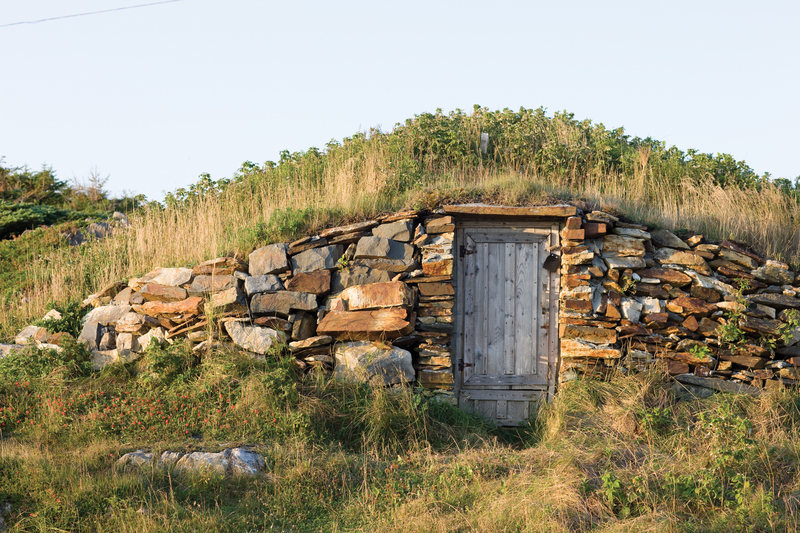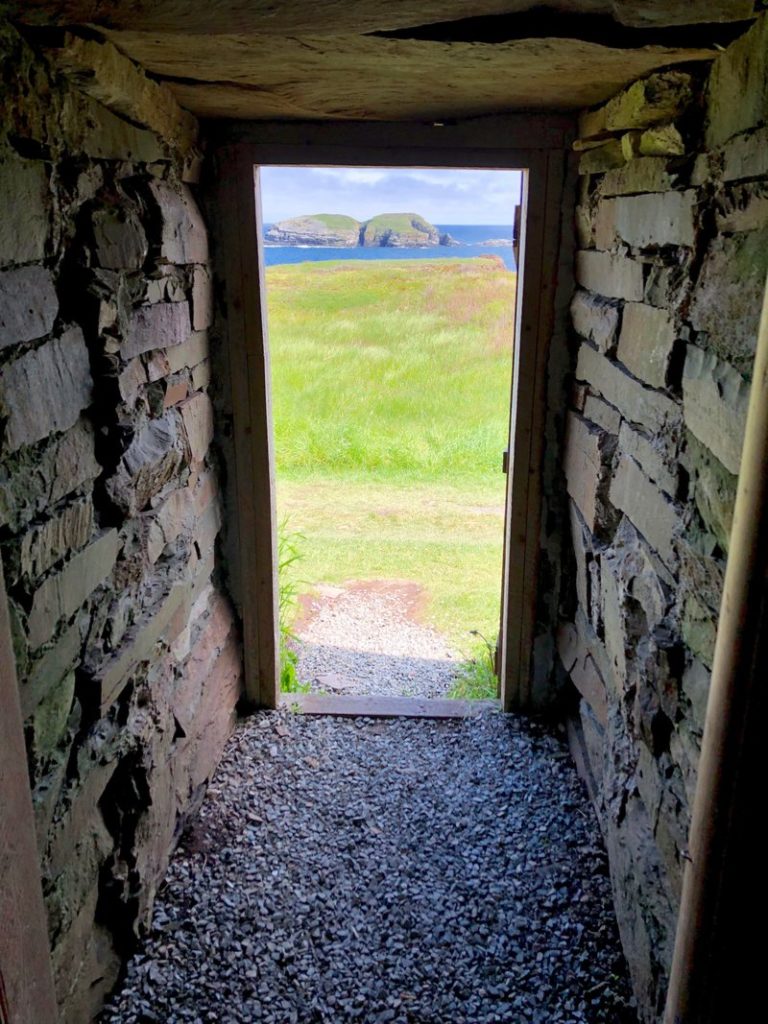Elliston, a tiny town in Newfoundland, Canada’s most eastern province, was traditionally a fishing community. Cod was king, until in 1992, the Canadian government imposed a cod fishing moratorium. Overnight, thousands of livelihoods were wiped out. Many locals left for work in other provinces.
Some enterprising residents decided to put some of the legendary Newfoundland bootstrapping spirit to work and came up with the idea of publicizing the abundance of traditional root cellars that dot the region to attract tourists. Venturing inside your typical root cellar, a small vestibule leads to a door, beyond which is a small, dark chamber redolent of earth and moss. Troughs all along the walls hold root vegetables: potatoes, beets, parsnips, and carrots.
Venturing inside your typical root cellar, a small vestibule leads to a door, beyond which is a small, dark chamber redolent of earth and moss. Troughs all along the walls hold root vegetables: potatoes, beets, parsnips, and carrots.
From the outside, the grass-covered mounds with their latched wooden portals seem like quaint homes for hobbits. But for centuries, such cellars kept Elliston residents alive. “Everyone had a cod fishing boat, a subsistence garden where they grew root vegetables, and a root cellar to store them during the long winter,” says Coles-Hayley. “Before refrigerators, root cellaring was essential in winter. Without them, people would not have been able to survive.”
Beyond a mere attraction, locals knew that root cellars could tell the story of Newfoundland, a place where hyper-local food has always been a necessity rather than a lifestyle option. So, in July 2000, they declared Elliston “The Root Cellar Capital of the World.”
Some Elliston families had maintained and used their root cellars over generations. Others were decayed. So the town organized a restoration of a number of its root cellars, while leaving some as-is. But even the run-down specimens had a “ruin porn” appeal for visitors coming to snap cellar photos.
Many root cellars received new roofs and concrete reinforcements. According to Sid Chaulk, a volunteer on the restoration team, they restored 43 cellars between 1999 and 2001. Older members of the community provided vital information on root cellar construction. For example, the short corridor, known as the porch, helps keep frost out, as do the doors. “These cellars always have two doors, though some even have three,” he says. “You were taught to shut the first door before you opened the second.”
Even after fridges became popular, the rustic-looking cellars proved to be superior storage facilities. They provide just the right level of humidity to keep vegetables fresh and frost-free for months and months. Due to layers of insulating earth and rock, root cellar temperatures never dip below freezing, and never climb higher than 8°C.  Soon after the declaration, a group of Memorial University students undertook to document and map the town’s root cellars. Toronto-raised Crystal Braye, a lead student on the project, had never seen a root cellar before. She recalls spending the summer traipsing around the town, interviewing older members of the community while collecting “measurements and GPS coordinates,” she says. They found 135 root cellars around Elliston (a town of 308 people). The earliest dated back to 1839.
Soon after the declaration, a group of Memorial University students undertook to document and map the town’s root cellars. Toronto-raised Crystal Braye, a lead student on the project, had never seen a root cellar before. She recalls spending the summer traipsing around the town, interviewing older members of the community while collecting “measurements and GPS coordinates,” she says. They found 135 root cellars around Elliston (a town of 308 people). The earliest dated back to 1839.
Their study identified five different types of root cellars. Because of its rocky local landscape, Elliston’s root cellars are predominantly the double-door, ground-level entrance variety. Built into hills, rather than dug underground, they were often sealed with moss before the introduction of concrete. Another popular style was the “hatched entrance,” a mound cellar where you enter through the roof.
Beyond tourism, these powered-down storage systems resonate with a new generation focused on locally grown foods and the greenest ways of preserving them. Elliston residents are still restoring old cellars and building new ones. As Braye concluded in a paper after her summer of fieldwork, not only are the root cellars of Elliston “anchors to practices and values of past generations,” they also serve as inspiration for a more sustainable future.
You can read the original article at www.atlasobscura.com

i am in nead of some insrtuctions and answers abouut my root cellar..it needs restoraion badly..i dont want to loose it as it serves as a storm protection as well..i live in prairie city, iowa and i am on afixed income, but dsring to try myself,,,so please heip me,,
thank you so much rani dentler
po box 275
prairie city,iowa
50228
If you go to http://greenhomebuilding.com/storeyourfood.htm you will find some information about root cellars in general, as well as a questions and answers section where you can send any specific questions that you might have.
WOW. Very similar root cellars that still exist on my grandfathers property in Northern Greece. Built them in the 1920’s after they were run out of Trebizond Pontus Turkey and “re” settled in northern Greece.
Would love to see some pictures showing the inside construction and also the food in the storage bends.
There are a few more pictures at https://www.atlasobscura.com/places/root-cellars-of-elliston
Learning from our elders with wisdom and experience certainly can help use to sharpen our own wisdom moving into the 21st century. thank you for finding this, Kelly.
thank you Kelly and all those who helped worked on finding them! sharing these with us! keep developing and showing us! even those of us desert rats need root cellars to keep cool in hot days; we don’t have moss, but do use earth and straw! thanks. Jehane
Neat to learn about these root cellars in Newfoundland. My great grandma had a root cellar in WI. It was always full of interesting and mysterious things when I was young. I learned at a young age the importance of a root seller in her area.